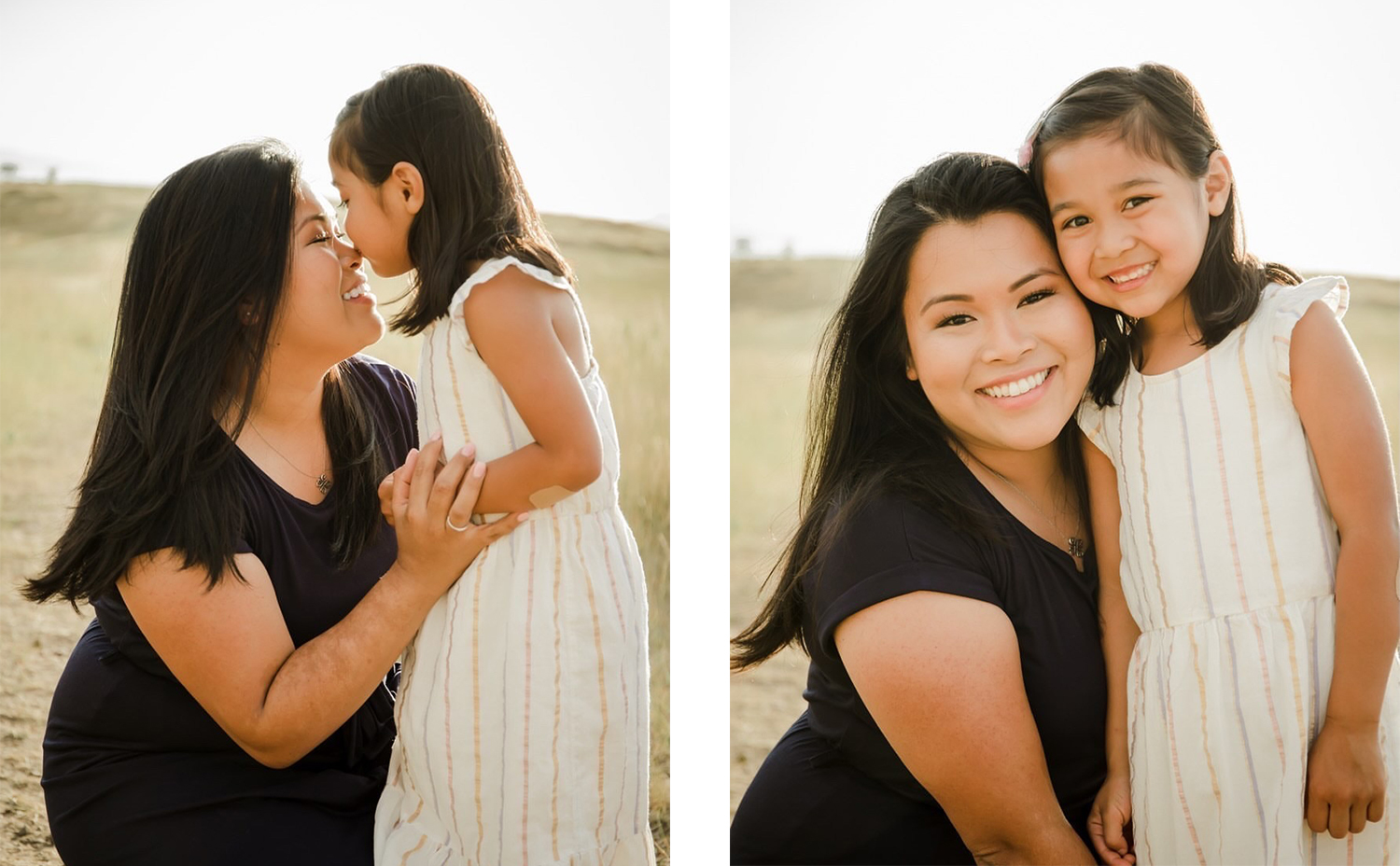Mary Ann Evans, the British poet and novelist who was better known by her pseudonym George Eliot, once penned: “Life began with waking up and loving my mother’s face.”
That was her 19th-century way of saying moms are awesome.
To celebrate Mother’s Day, Tandem Diabetes Care chatted with three moms, each managing type 1 diabetes in their own way, about how their children’s love will never cease to be the driving force in their lives.
“I’m so proud of her”
Emma Hughes, 6, has a snappy comeback for everything. No doubt, the kindergartner has fielded plenty of questions about her insulin pump. But her mom, Erika, says she’s quick with a retort.
“I’m so proud of her,” said Erika. “She’s aware that she’s different, but she doesn’t let that change the way people see her. When people ask her about her pump or what’s on her arm, she just smiles and says, ‘My pancreas is broken.’”
It’s been three years since Erika called 911, nearly losing Emma to a misdiagnosis and subsequent diabetes-induced coma. The last three years have been a never-ending series of classes, research, and self-education. But she has also embraced the diabetes community.
“At first it was overwhelming because there is so much information you need to know,” she said. “I was confused, but they explained it would be easier as the years went by. I did my own research and found an amazing Instagram community where these people were so proud to show off their Tandem pumps. That’s how we got started. Our healthcare provider recommended Tandem and Basal-IQ® technology.”
Erika does her best to keep things “normal” for Emma. Though there are still a lot of misconceptions that surround type 1 – primarily, confusion between type 1 and type 2.
“It’s frustrating sometimes because people will think that we somehow gave this to her because we gave her too much sugar or we weren’t healthy,” Erika said. “Sometimes I don’t even use the word ‘diabetes.’ I’ll just say she has an autoimmune disease. I hope we can work towards a better understanding.”
Erika is flattered to be featured for Mother’s Day. But she’s quick to recognize that it’s not just moms who make a difference for people living with diabetes.
“To anyone who has type 1, has a child or a family member with type 1 and you are helping to care for them, you are amazing,” she said. “We are all so strong together and I love this community because it’s so loving and willing to help.”

Erika’s daughter, Emma, was diagnosed with type 1 diabetes three years ago. Since then, Erika has found a loving and supportive online community that has embraced her family.
“It’s our bond”
Keary Cheney and her daughter, Zola, may have been born on different continents, but they were diagnosed with type 1 just two months apart.
Keary and her husband were in Uganda adopting their son when she got sick and returned to the U.S., where she was eventually diagnosed. It took several months before she could return to Uganda. During that time, the adoption organization reached out about a 6-year-old who had recently been diagnosed.
“We went to Uganda to adopt our son and returned with a son, a daughter, and two of us having type 1,” recalled Keary. “Talk about a big transition. I had to learn how to be type 1 and how to be a parent to two children, including one who also had type 1. The way I knew life was never going to be the same.”
Keary’s love for her children knows no limits. But she admits sharing type 1 with Zola, now 12, is something that is unique to them. In many ways, it tightened the bond between a newly adopted child and a parent.
It has also created an opportunity for Keary to teach her children about the power of positivity.
“I want to model for her what diabetes looks like in a positive light,” Keary said. “There can still be a lot of joy. I ran the New York City Marathon. You can do really hard things. I don’t want her to look at me and think mom is talking about how horrible it is. I want her to see how I used it as a platform to help other people, spread joy, and find the positives.”
Following her diagnosis, Keary looked to the online community for inspiration, information, and support. But it wasn’t until after she adopted Zola that she also discovered a maternal instinct that transcends their diagnoses.
“Neither of us feel alone in our journey,” Keary said. “I wish more than anything she didn’t have it. But she does. So we have each other.
“I know when diabetes feels hard for her because I know what that feels like. We test our blood sugar together and dose for dinner together. We celebrate good blood sugar together. And more than anything, this year has taught us to appreciate and cherish every moment we have with our kids.”

Keary and her daughter Zola, who were diagnosed with type 1 diabetes just two months apart, have a unique mother-daughter bond that gets them through the tough times and helps them celebrate the wins.
“It’s all I’ve ever known”
Rachel Ferris offered a pregnant pause -- and it had nothing to do with the fact that she’s expecting baby No. 3 in August.
Rachel had just been asked a question: What would she want her children to say about her as a mom living with type 1 diabetes?
“Thank you for showing us that being different isn’t a bad thing,” said Rachel, her voice cracking ever so slightly. “You’ve taught us about hard work and resiliency and that even in hard times you love us unconditionally.”
Rachel was diagnosed with type 1 when she was just 13 months old. She credits her own mother with helping her form her identity and creating a childhood of inclusion – like supplying sugar-free cookies for her grammar school birthday party so she wouldn’t miss out.
Just as it is for many moms, life is a juggling act for Rachel. But she chooses to incorporate her diabetes management with her children. She’ll explain to her 4-year-old daughter why she’s using her t:slim X2™ insulin pump and why each button is important. It’s playful, but also a teaching moment.
“At first it was overwhelming because if my diabetes is out of control, I can’t take care of my babies,” Rachel explained. “There was a huge learning curve initially of trying to care for myself while also caring for this tiny human. Now we talk about it. I explain that mommy’s body works differently than hers. This is how I stay healthy so I can play and make dinner.”
Rachel shares her journey on social media because she wants to show people that – even from a young age – diabetes doesn’t have to define who you are.
“If there’s a 13-year-old girl with type 1 who stumbles across my Instagram, she’s going to see a grown woman with two kids and another on the way,” Rachel said. “That can help somebody feel like they are not alone. I want to help motivate and inspire.”

Rachel was diagnosed with type 1 diabetes when she was just 13 months old. But that hasn’t stopped this mom of two (with a third on the way) from living the life she’s always wanted.
We appreciate this incredible trio of moms for taking the time to chat with us about their journeys. To all of the moms living with diabetes, or have children with diabetes, thanks for all you do. Happy Mother’s Day!
From time to time, we may pass along suggestions, tips, or information about other Tandem insulin pump user experiences or approaches to the management of diabetes. Please note, however, individual symptoms, situations, circumstances, and results may vary. Please consult your physician or qualified healthcare provider regarding your condition and appropriate medical treatment. Please read the Important Safety Information before using a Tandem Diabetes Care product.
Responsible Use Control-IQ Technology
Even with advanced systems such as the t:slim X2 insulin pump with Control-IQ technology, users are still responsible for actively managing their diabetes. Control-IQ technology does not prevent all high and low blood glucose events. The system is designed to help reduce glucose variability, but it requires that users accurately input information, such as meals and periods of sleep or exercise. Control-IQ technology will not function as intended unless all system components, including CGM, infusion sets and pump cartridges, are used as instructed. Importantly, the system cannot adjust insulin dosing if the pump is not receiving CGM readings. Since there are situations and emergencies that the system may not be capable of identifying or addressing, users should always pay attention to their symptoms and treat accordingly.